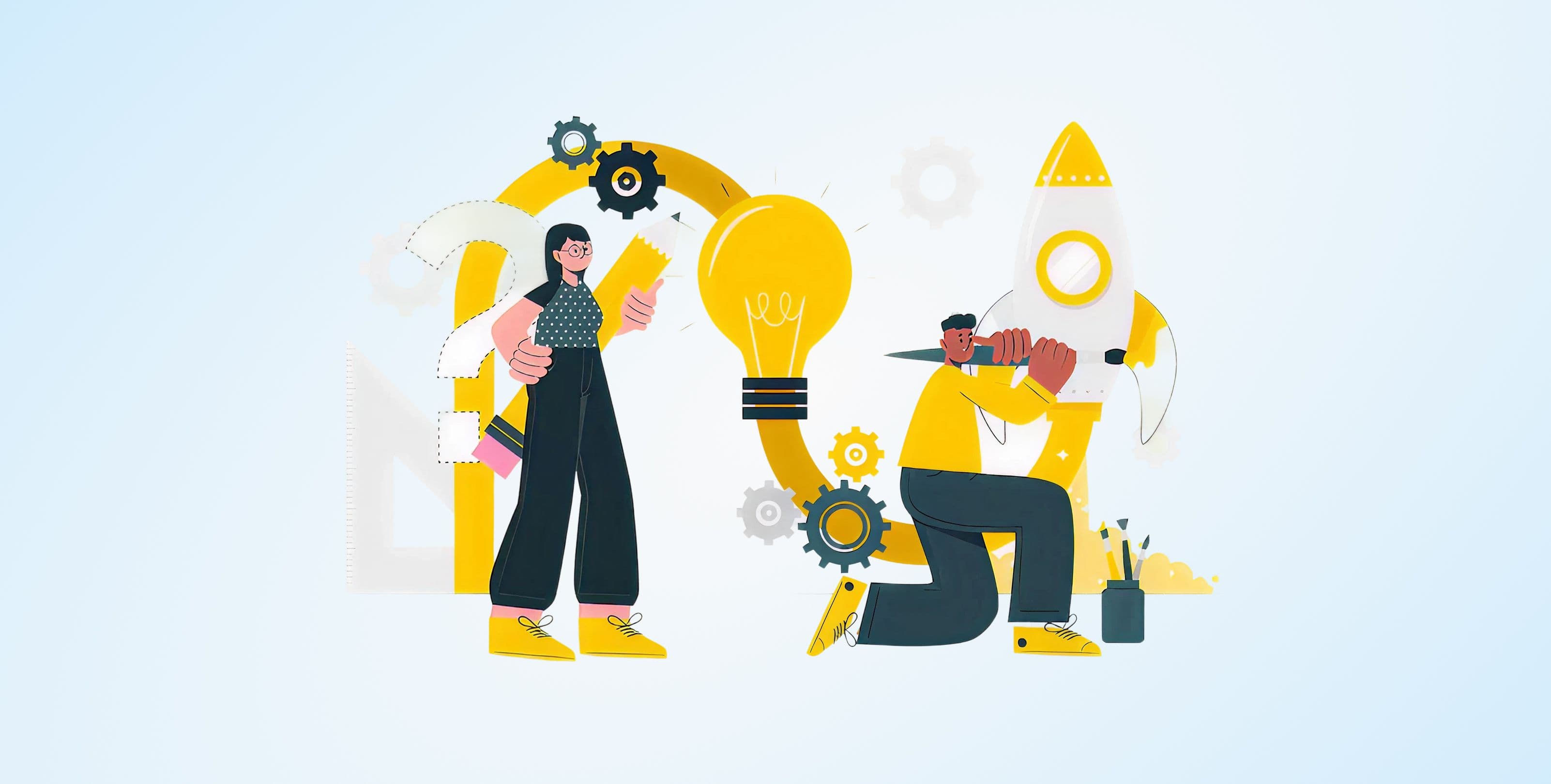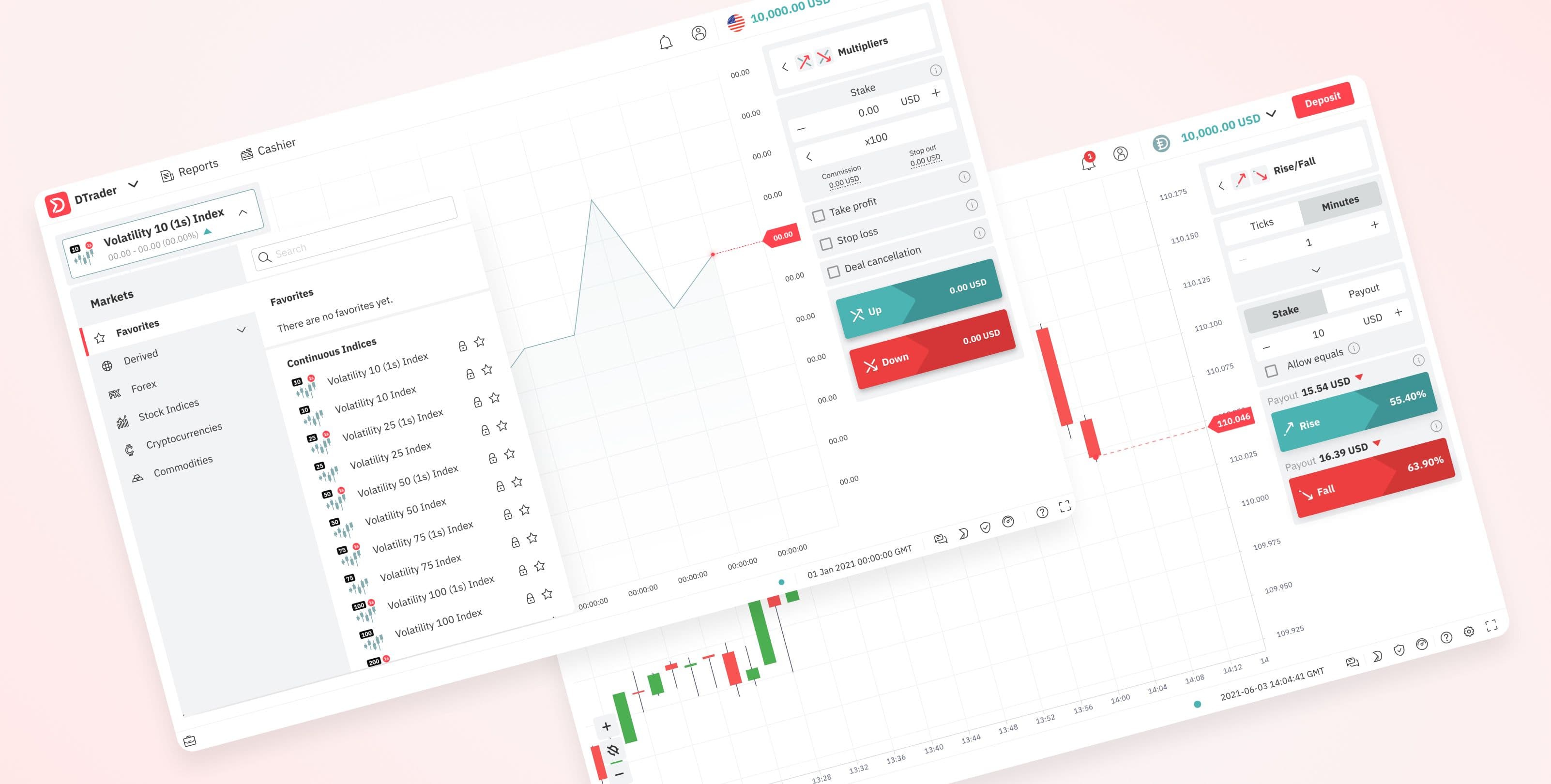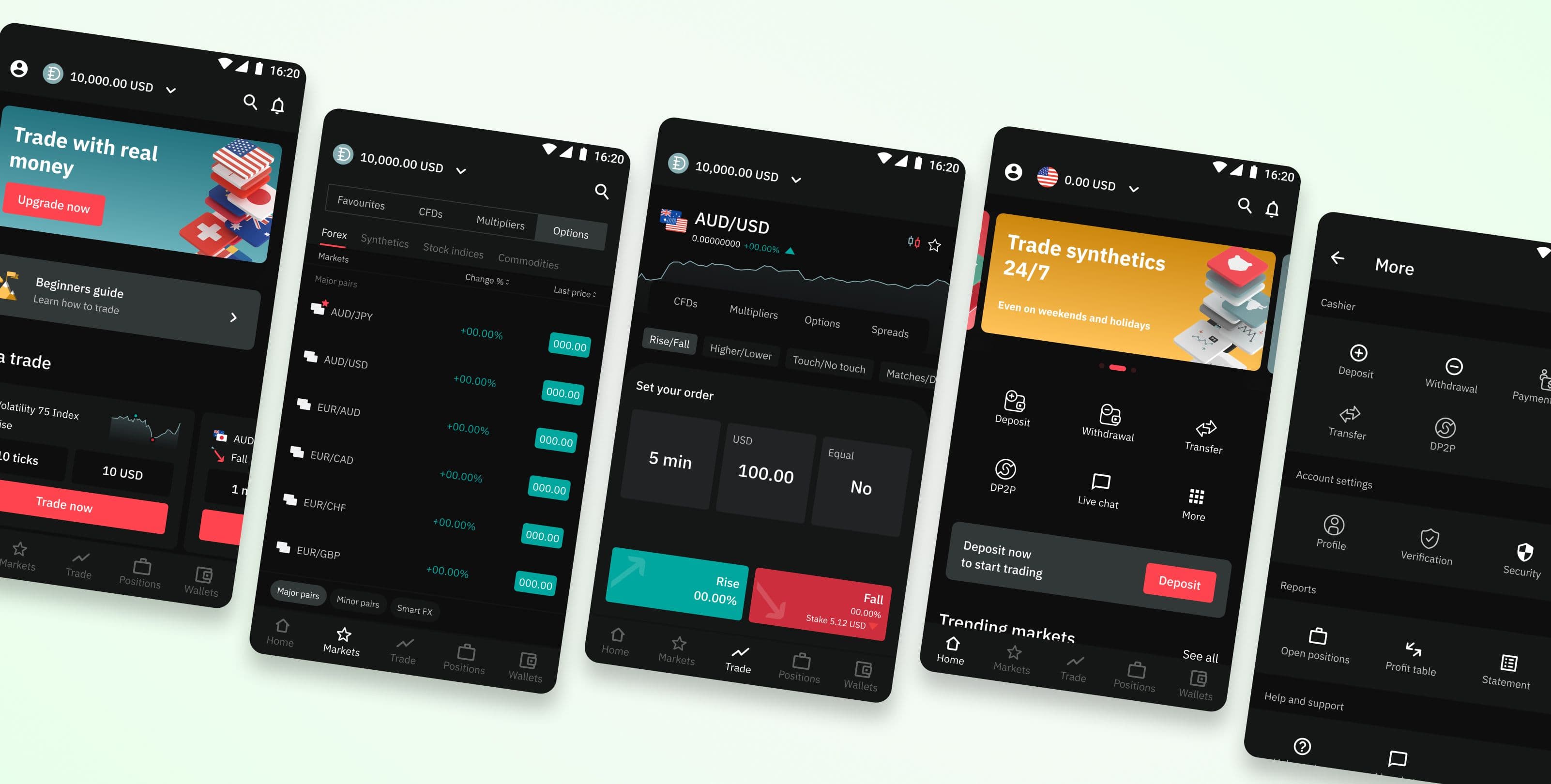Career Development Framework
As UI/UX Manager at Deriv, I built a professional development framework that identified essential skills, created clear career paths, and set up progression benchmarks for a team of 30+ designers, researchers, and UX professionals.

My Role
As UI/UX Manager, I:
- •Led the design of a comprehensive skills framework for 30+ team members
- •Established 5 skill progression levels from Beginner to Master
- •Created 3 career paths (Research, UX, Design), each with 3 tracks: Individual Contributor, Specialist, and Managerial
- •Implemented quarterly assessment process for continuous growth tracking
The Realization
When I got promoted to UI/UX Manager in July 2022, I inherited a team of 30+ people across design, UX, and research. The team was growing fast, but I didn't have a clear way to support their growth.
I started by talking to people in 1-on-1s. That's when I discovered something important: not everyone wanted to be a team lead or manager. Some wanted to go deeper into their craft and become experts. Others wanted to lead teams. But none of them had a clear map showing what skills they needed or where those skills could take them.
That insight changed everything. The problem wasn't just about creating a skills framework. It was about creating multiple paths forward, not just one path to management.
The Problem I Needed to Solve
Through 1-on-1 conversations, I discovered three critical problems with our traditional career ladder and undefined skill expectations:
1. Invisible Strengths
I knew my team's individual strengths and weaknesses, but they didn't always know their own. Without clear skill categories and levels, talented people were undervaluing themselves, or overestimating gaps they needed to fill.
2. Unclear Career Paths
Some team members wanted to become managers. Others wanted to stay hands-on and go deep into their craft. I had no framework to help them understand both paths, the skills required, or what "senior" even meant beyond their current title.
3. The Stuck Expert
Our most experienced senior designer had been stuck at the same level for 3 years. Not because he wasn't growing. He was mentoring juniors, setting design standards, influencing product decisions. But he didn't want to manage a team, so the ladder just stopped for him.
Designing the Solution
I started by looking at what successful tech companies were doing. Google, Apple, Spotify, they all had dual-track or multi-track career ladders. But I didn't want to just copy what they did. I wanted to design something that fit our team's needs, our culture, and our reality as a growing design team in a trading company. So I brought the team in through a series of workshops.
What Motivates You?
"What excites you most about your career growth?"
The answers split almost evenly. Half talked about developing people and building teams. The other half talked about becoming technical experts and thought leaders.
This confirmed we needed at least two distinct tracks.
What If You Change Your Mind?
"Should you be locked into your choice?"
The consensus was clear: "No! I might want management now but craft later, or vice versa." This led to the pivot point concept, the ability to change tracks at senior level as interests change.
The "Master" Question
"How do we measure if someone is a master?"
A master isn't just someone who works well within the company. They should be recognized outside of it. Think Jony Ive. Industry-recognized expertise and thought leadership.
Building on Proven Foundations
I didn't reinvent the wheel. I adapted Clearleft's professional development framework, an industry-leading blueprint for structuring skills and career progression, and customized it to fit Deriv's specific context, team structure, and organizational culture.
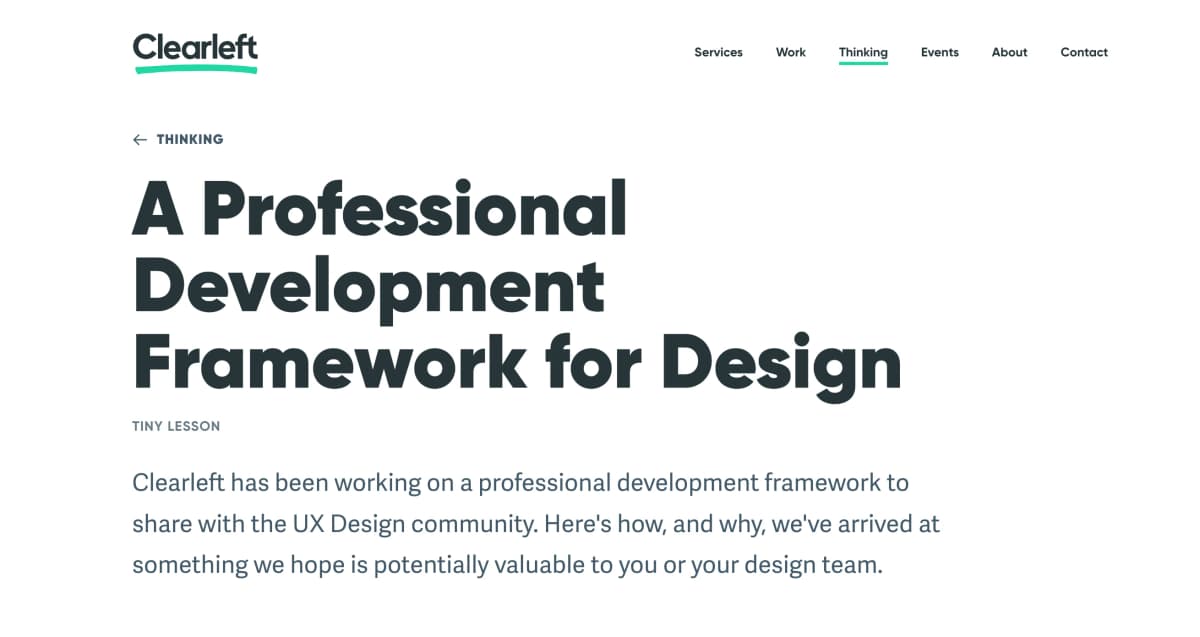
Adapting industry-leading frameworks to fit our team's unique needs
Key Learnings from Clearleft:
- • Clear skill categorization framework
- • Progressive skill level definitions
- • Structured career pathways
- • Regular assessment cadence
The Solution
Based on the research and team input, I created a framework with three key components:
- 1.Two types of skills: Foundation skills that everyone needs, and Specialist skills specific to each discipline
- 2.Five progression levels: Clear criteria from Beginner to Master
- 3.Three career paths: IC, Specialist, and Managerial tracks across Design, UX, and Research
Two Types of Skills
Foundation Skills
Universal attributes that apply across all roles
These are the core competencies that every team member should possess, regardless of their specific role or specialization.
- • Communication
- • Problem-solving
- • Empathy
- • Strategy
Specialist Skills
Role-specific expertise for each domain
These are the technical and domain-specific skills unique to each role within the team.
- • Design
- • UX
- • Research
- • Leadership (People Management)
Note: Leadership here refers to formal people management roles, which aligns with the Managerial career track.
Five Skill Progression Levels
I established five clear levels of skill progression, providing a structured path for growth from entry-level to mastery. Each level has specific criteria and expectations.
Level 1: Beginner
Basic understanding of concepts, learning fundamental skills, requires guidance and supervision.
Level 2: Novice
Can handle simple tasks independently, developing confidence, still needs occasional guidance.
Level 3: Intermediate
Works independently on most tasks, can mentor junior team members, contributes to team discussions.
Level 4: Expert
Deep expertise in area, leads complex projects, mentors others, influences team practices.
Level 5: Master
Industry-recognized expertise, shapes organizational strategy, thought leader, drives innovation.
Detailed Skills Breakdown
Each main skill is broken down into specific sub-skills. For example, Communication includes collaboration, presentation, feedback, and writing. This detailed breakdown helps team members understand exactly what they need to develop at each level.
Interactive framework showing all foundation and specialist skills with their sub-skills
Career Path Framework
After weeks of iteration and feedback, I settled on a three-track career framework: Individual Contributor (foundation for everyone), Specialist (deep expertise), and Managerial (people leadership). Each of our three career paths (Research, UX, and Design) would follow this same structure, allowing team members to choose their path based on their strengths and interests.
Individual Contributor (IC) Track
Foundation for everyone
All team members start here, building foundational skills and expertise.
Specialist Track
Deep technical expertise
For those who want to become technical experts and thought leaders in their field.
Managerial Track
People leadership
For those passionate about leading teams and developing people.
Key Innovation: Pivot Points
At the Senior level, team members reach a pivot point where they can choose their next direction:
Continue as Specialist:
Deepen technical expertise, become a thought leader, influence product strategy through deep knowledge rather than people management.
Move into Management:
Lead teams, develop people, shape organizational culture, and drive strategic initiatives through team leadership.
Flexibility: Team members can switch between tracks as their interests and strengths evolve, ensuring career paths adapt to individual growth.
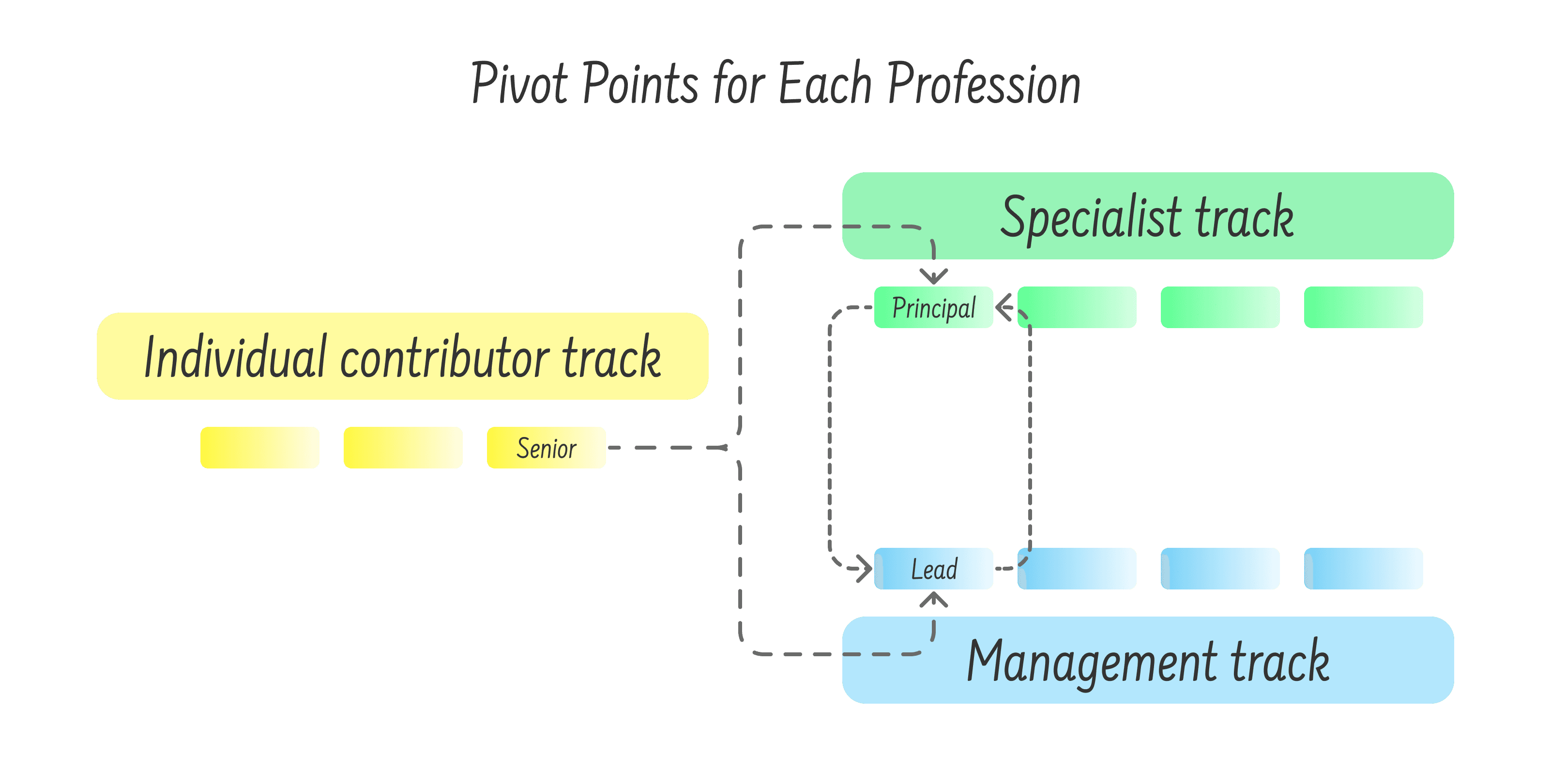
Visual representation of pivot points across all three career tracks
Framework Breakdown
This interactive view shows how the three career tracks intersect with skill levels and job titles across all disciplines.
Complete career path framework showing all tracks, levels, and titles
The Rollout: Challenges and Turning Points
I launched both the skills framework and career paths together in December 2022, ahead of our 2023 performance review cycle. This timing was strategic. I wanted the framework in place before annual reviews so team members could use it to guide their conversations and set goals. I built it into our quarterly performance assessments, meeting with each team member every 3 months to discuss their career path, skill development, and growth goals. The hard part wasn't designing the framework, it was changing how 30+ people thought about their careers.
The Launch Challenge
A mid-level designer asked, "If I'm weak in Strategy skills, does that mean I can't be promoted?" People were seeing it as a gate, not a guide. I clarified: "These skills show you where to grow, not where you're stuck."
Managing the Anxiety
One senior designer asked: "Do I have to choose right now? What if I choose wrong?" I reframed it: "You don't have to choose anything today. The choice only matters when you reach Senior level, and even then, you can change your mind later." The relief was immediate.
The First Pivot
The UX researcher who'd become a reluctant lead wanted to return to Principal Researcher but was scared it would look like failure. I made it public and positive in our team meeting. That changed everything. Within weeks, two more people asked about switching tracks.
Impact by the End of 2023
Junior → Mid-level
Senior → Principal
Lead → Principal (track change)
Lead → Manager
HR even adopted my framework as a model, encouraging other departments to create similar structures for their teams. In quarterly feedback, team members consistently highlighted the framework as one of the most valuable changes to their development process.
Success Stories
The Specialist Path Discovery
Four team members, a team lead and three seniors, realized through the framework that they didn't want to pursue people management. They chose the Specialist track instead, focusing on deep technical expertise. They are now thriving in their roles.
The Aspiring Manager
One senior designer told me: "I'm happy that now I know exactly what I need to do to become a manager." With a clear roadmap, she built the right skills and earned her promotion to manager within the year.
The Reality Check
The framework's clear skill definitions helped junior team members identify specific growth areas. With targeted learning materials (LinkedIn and Figma courses), they accelerated their development and built stronger foundations.
The three-track framework proved that career growth isn't about climbing a single ladder. It's about giving people the clarity to choose their path and the flexibility to change direction. The framework changed how the team talks about growth. Now, instead of vague aspirations, I can have concrete conversations backed by shared language and measurable progress. It's become a living system that evolves with our team's needs, ensuring career growth remains clear and achievable for every member.
